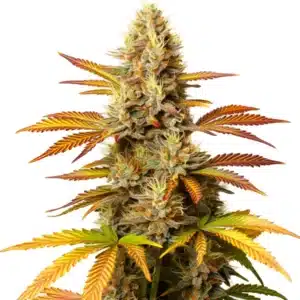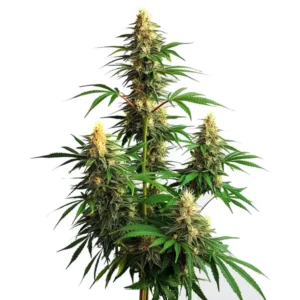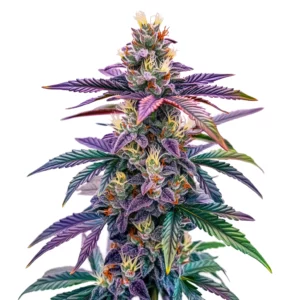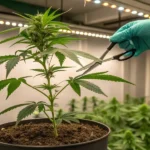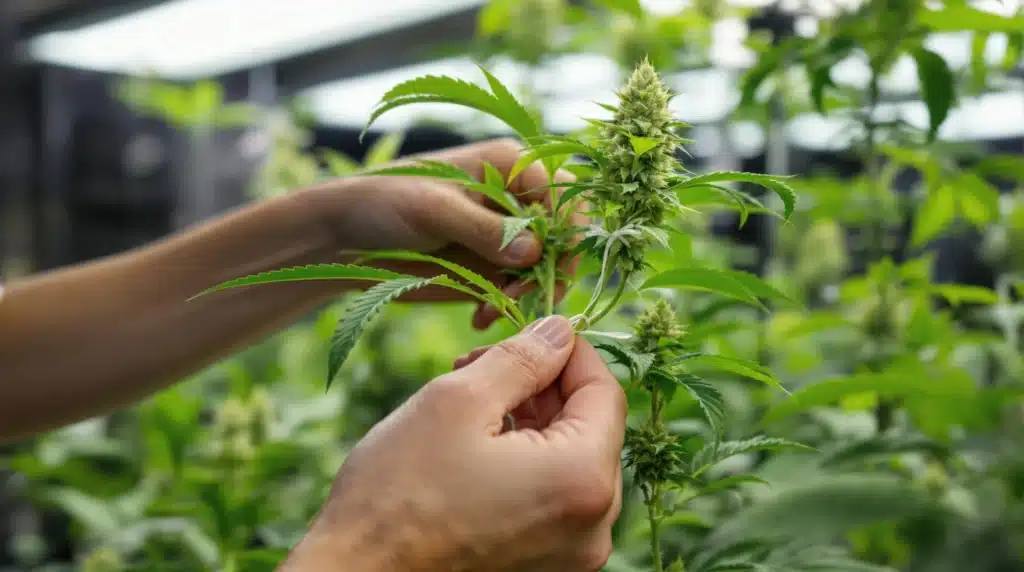
Low Stress Training for Autoflowers: The Key to Bigger Harvests
Cultivating cannabis plants can be a rewarding and enjoyable journey, especially for those who are embarking on this green path for the first time. One technique that can be beneficial for autoflowering plants is known as low stress training (LST). This method enhances light penetration, promotes a more even canopy, and can lead to increased yields, all while minimizing any potential damage that might come with high stress training methods.
By using LST, you’re effectively steering your plants toward greater productivity, allowing them to deliver more robust harvests. It’s not just about the end result; this method turns growing into an engaging and interactive experience. Are you ready to dive deeper? Let’s explore the fascinating world of LST!
Recommended Strains
Critical Banana
|
|
THC | 22% - 24% (Medium) |
|
|
Type | Feminized |
|
|
Yield | High |
|
|
Phenotype | 50% Indica / 50% Sativa |
Critical Auto
|
|
THC | 10% - 14% (Low) |
|
|
Type | Autoflowering |
|
|
Yield | Low |
|
|
Phenotype | 70% Indica / 30% Sativa |
What is Low Stress Training?
Low stress training refers to techniques that involve gently manipulating the shape of the cannabis plant without inflicting significant harm. Imagine cradling a young plant and guiding its branches instead of forcing them; that’s the essence of LST. Growers bend and tie down branches, allowing more light to reach lower bud sites, which is especially effective for autoflowering strains that lack the luxury of a long growth cycle.
When you embark on LST, your plants begin to grow horizontally rather than vertically. This is a key feature of LST as it encourages lateral growth. By bending the branches outward, you’re prompting the plant to redirect its energy toward side shoots, leading to more budding sites. In the case of autoflowers, which often have a rapid growth rate, this technique can help ensure that every part of the plant receives the attention it needs to flourish.
Promos & Deals
When to Start Low Stress Training?
The timing is important when it comes to implementing LST for the best results. Most seasoned growers recommend initiating low stress training when your plants are still young, ideally between two to three weeks after germination. At this stage, your plants will be flexible and resilient enough to handle gentle bending without breaking, making them prime candidates for training.
However, waiting too long to start can lead to complications, as the branches of the plants may become too rigid. This rigidity can result in breakages or undue stress on the plants, ultimately impacting their growth and yield. Consequently, keeping a close watch on your plants will empower you to recognize the right moment to implement LST effectively. Listening to your plants is key!
How to Perform Low Stress Training?
Performing low stress training is an easy and rewarding process that requires minimal tools. Here’s a step-by-step guide to help you get started on this journey:
- Gather your supplies: You’ll need some soft ties or string, gardening stakes, or adaptable items for securing the branches.
- Identify the right branches: Look for strong primary branches and decide the direction in which you want them to grow. Bending them outward will encourage the growth of side shoots.
- Gently bend the branches: With patience, carefully bend each branch down and away from the center. It’s essential to apply gentle pressure; your goal is to guide, not to break.
- Secure the branches in place: Use your ties or string to hold the branches in their newly appointed positions. Ensure it’s snug but not overly tight to avoid harming the plant.
- Regularly monitor growth: Consistently monitor your plants’ growth and adjust the ties or bend new branches as necessary. This might require weekly assessment and adjustment.
This straightforward method can transform your growing experience. As you practice, you’ll find yourself becoming more comfortable making adjustments and fine-tuning your method over time. And remember, patience is your ally; as your plants adapt to their new shapes, you’ll begin to see delightful results!

Benefits of Low Stress Training for Autoflowers
Low stress training boasts a range of advantages that can enhance the overall health and productivity of autoflowering plants. Here are some compelling benefits that make LST a go-to strategy for many growers:
- Improved light exposure: By allowing more light to reach the lower sections of the plant, all bud sites can enjoy added growth potential.
- Increased yields: With more buds getting adequate light, you can unlock the potential for larger harvests compared to plants that have not been trained.
- Better airflow: A more spread-out canopy promotes improved air circulation, which minimizes the risk of unwanted mold and mildew.
- Reduced risk of stress: Since LST involves less stress than high-stress growing techniques, it decreases the chances of shocking the plant during the process.
These benefits make LST an attractive and effective approach, particularly for optimizing the limited growing time of autoflowering strains. Plus, it’s a technique that can make you feel more connected to your plants as you guide them toward their highest potential.
Common Mistakes to Avoid When Training Your Plants
Even seasoned growers can stumble when trying out low stress training. Being aware of common missteps can significantly boost your success rate:
- Over-tightening the ties: If your ties or string are too tight, they may constrict growth, which can lead to damage. Always ensure there’s enough slack for the branches to grow comfortably.
- Starting too late: Delaying the start of LST can result in breakage. It’s essential to observe growth patterns closely and act promptly when the time is right.
- Neglecting to observe regularly: Consistent observation is vital. As plants grow, you may need to adjust your training techniques or position of the ties.
- Ignoring plant genetics: Different strains behave differently when it comes to training. While some may thrive on LST, others may adapt better to minimal intervention.
Avoiding these prevalent mistakes can pave the way for a smooth LST process. Remember, the journey takes time; approach this method with patience and offer your plants the observations they need to thrive!
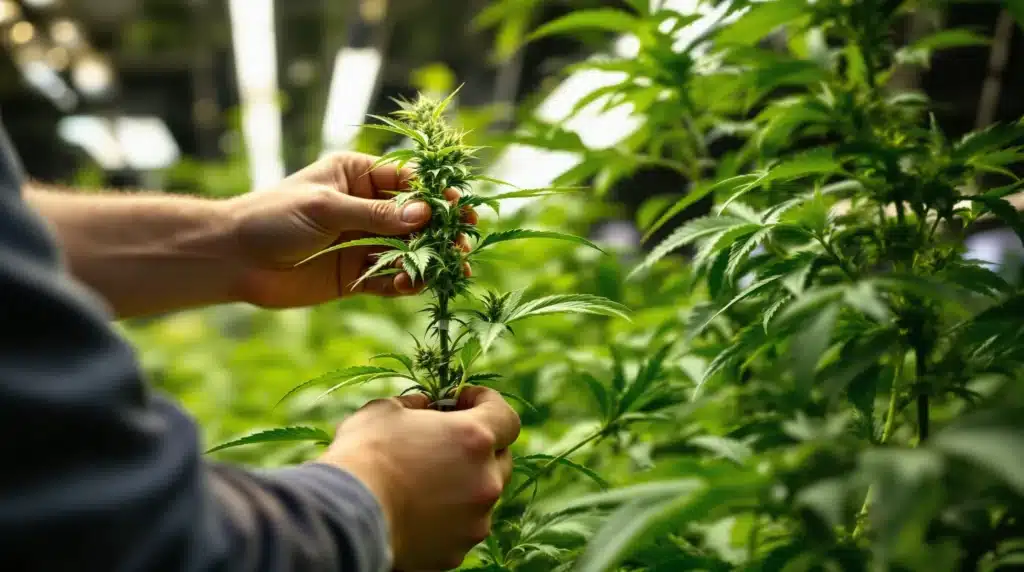
FAQs
What are autoflowers?
Autoflowering plants are a special category of cannabis that automatically flower after a set period, regardless of light exposure. This characteristic differentiates them from photoperiod strains, which require specific light schedules to transition into the flowering phase.
Is low stress training suitable for all strains?
While LST is particularly effective with autoflowers, it can also be beneficial for photoperiod strains. However, some strains may require unique care or different training techniques, so it’s smart to research the best methods for your specific strain.
How often should I check on my plants during LST?
It’s important to monitor your plants at least once a week after starting LST. These regular check-ins allow you to catch any potential issues early and adjust your training approach as necessary.
What if I accidentally break a branch while training?
If a branch breaks during training, don’t worry! You can try to tape it back together with gentle care. More often than not, the plant can heal itself, especially if you give it some extra attention as it recovers.
Can I combine low stress training with other techniques?
Absolutely! You can integrate LST with other methods like topping or cropping. Just be careful; don’t overwhelm your autoflowers, as they have shorter recovery times and can be more sensitive to stress.
Low stress training is a valuable tool for growers looking to optimize the yields of their autoflowering plants. By encouraging even growth patterns, maximizing light exposure, and minimizing stress, LST can profoundly enhance your growing experience. Whether you’re just starting out in cannabis cultivation or possess some experience, integrating LST into your routine can pay substantial dividends.
As you set forth on this exciting agricultural endeavor, remember to initiate training early, handle your plants gently, and keep an attentive eye on their progress. With practice, care, and a bit of green thumb magic, you’ll soon be reaping the rewards of your efforts!


